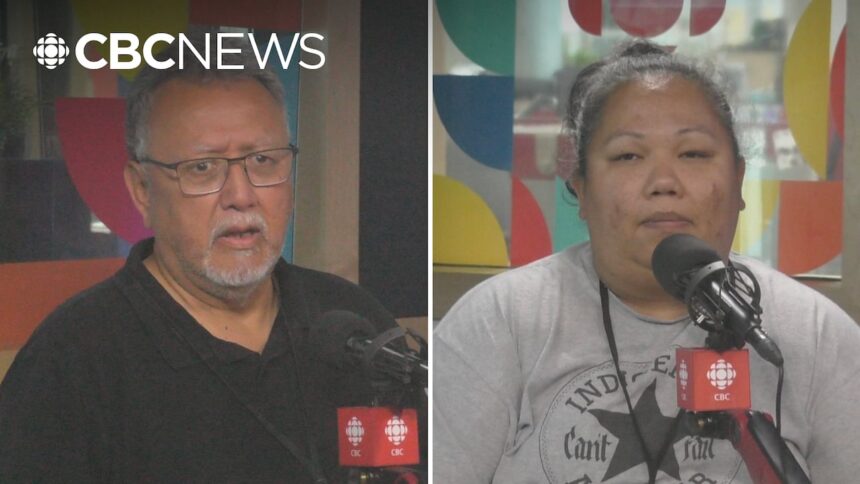The morning fog lifts slowly off Vancouver’s Burrard Inlet as I watch Tsleil-Waututh Nation member Gabriel George wade into the shallow waters. His movements are deliberate, practiced – a harvesting technique passed down through countless generations. But what strikes me most is what’s missing from this scene.
“My grandmother could fill a bucket with clams in minutes from these beaches,” George tells me, gesturing to the shoreline. “Today, we’re lucky to find even a handful safe enough to eat.”
This stark reality reflects a profound transformation of the inlet’s ecosystem – one directly tied to colonization and industrial development that has fundamentally altered Indigenous food systems that sustained communities here for millennia.
The Tsleil-Waututh, whose name translates to “People of the Inlet,” have witnessed their traditional food sources diminish dramatically over generations. Historical records and archeological evidence suggest that prior to European contact, Burrard Inlet teemed with marine life – clams, oysters, salmon, herring, and countless other species formed the backbone of Indigenous nutrition and cultural practices.
According to research published by the Tsleil-Waututh Nation’s Treaty, Lands and Resources Department, shellfish made up approximately 25% of their ancestors’ traditional diet. Today, consumption warnings and contamination have rendered most local shellfish unsafe to eat.
“This isn’t just about food,” explains Dr. Caroline Martin, environmental historian at Simon Fraser University. “These traditional harvesting practices represent complex knowledge systems, social bonds, and cultural continuity that have been disrupted by colonial policies and industrial pollution.”
The transformation began in earnest with the establishment of sawmills along Burrard Inlet in the 1860s, followed by the expansion of port facilities, industrial operations, and urban development. Each phase introduced new contaminants while physically altering shorelines crucial for marine habitat.
Records from Environment Canada reveal that by the 1970s, parts of the inlet contained concerning levels of heavy metals, hydrocarbons, and other industrial contaminants – many of which persist in sediments today. These pollutants have bioaccumulated in marine species that once constituted dietary staples for local First Nations.
The story of Burrard Inlet’s transformation isn’t unique in Canada. From coast to coast, similar patterns emerge where industrialization has compromised Indigenous food sovereignty. What makes this case particularly compelling is the extensive documentation of both the environmental changes and their cultural impacts.
I spoke with Charlene Aleck, a Tsleil-Waututh elder and former elected councillor, who shared how these changes rippled through community life. “When I was young, my grandfather would tell stories about how they could fish right off the shore and feed everyone. The water connected us – to our past, to each other, to our ceremonies. When the inlet became polluted, we lost more than just food.”
The contamination created a forced shift to market foods, contributing to health issues now common in many Indigenous communities. Diabetes rates among the Tsleil-Waututh Nation have increased substantially since traditional diets were compromised, paralleling national trends where Indigenous communities face diabetes rates 3-5 times higher than the Canadian average, according to Health Canada.
But there are signs of hope amid this challenging history. In 2017, the Tsleil-Waututh Nation released their Burrard Inlet Action Plan, a science-based initiative to restore the inlet’s health. The plan combines traditional knowledge with contemporary environmental science to guide rehabilitation efforts.
“We’re seeing small victories,” says Spencer Taft, an environmental coordinator with the Tsleil-Waututh’s Sacred Trust Initiative. “Herring populations are showing signs of recovery in some areas. We’ve successfully reintroduced native Olympia oysters in experimental sites. These are modest but meaningful steps.”
The federal government has also begun acknowledging its role in these historical disruptions. In 2019, Environment and Climate Change Canada committed $1.5 million to support Indigenous-led restoration projects around the inlet, though community leaders argue much more substantial investment is needed to address decades of degradation.
The City of Vancouver has incorporated some Indigenous perspectives in its shoreline management plans, including restoration of traditional plants in several locations. While these efforts represent progress, they address only fragments of a complex problem.
Walking along the inlet’s shoreline with George, I notice how he pauses occasionally to point out subtle features invisible to untrained eyes – places where certain plants should grow, where clam beds once flourished, where salmon once returned in numbers that “made the water look alive.”
“This knowledge isn’t gone,” he tells me. “But we’re running against time to restore these connections while our elders who remember the healthy inlet are still with us.”
What’s happening at Burrard Inlet reflects a broader reckoning across Canada – how to acknowledge the environmental dimensions of colonization while creating pathways toward reconciliation that include ecological restoration.
As climate change introduces new stresses to already compromised ecosystems, the stakes of this work grow higher. Traditional Indigenous knowledge about sustainable harvesting, seasonal cycles, and ecosystem management offers valuable insights for adaptation strategies that benefit all Canadians.
For the Tsleil-Waututh and other First Nations around Burrard Inlet, food sovereignty remains both a practical goal and a powerful symbol of cultural resilience. Their ongoing work to restore traditional food sources represents not just environmental stewardship but a reclamation of identity and rights long suppressed.
As we finish our walk along the shore, George stops to examine a small patch of restored coastline where native plants have been reintroduced. “This is just the beginning,” he says, “but it matters that we’ve started. The inlet has sustained our people since time immemorial. Now it’s our turn to help sustain it.”






